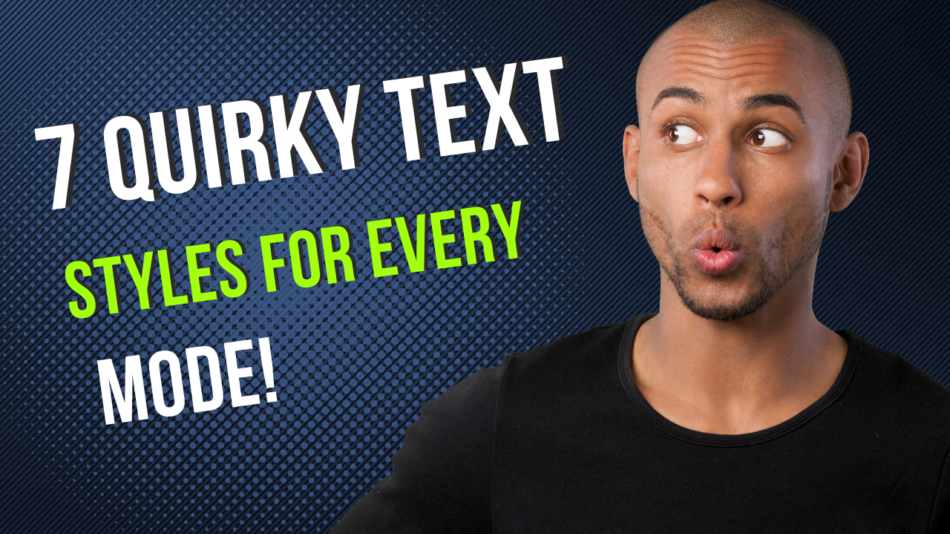Any individual who’s attempted to turn out an original knows this activity. You’re sitting there before the PC, struggling to concoct a few words. Then, you see the textual style menu and think: changing the writing to Goudy Old Style would be much more straightforward. Why didn’t I consider that earlier?
Maybe because you were writing, too occupied even to consider worrying about any of this stuff. However, the stress we do allow me to offer a few valuable tidbits from twenty years of dealing with book compositions.
It will bug you if your screen arrangement needs to be corrected. We’re going for the gold, a sense of completeness, what we hold back, and nothing in itself. The process and the story should become imperceptible. The characters, the world, and the narrative shine through. However, priorities are straight. Before you pick the right text fonts, you need to understand something called ‘line length.’
Serifs: Dependable Text Fonts
We should discuss the proper text fonts: the serif typefaces. Until the 19th century, books and leaflets were set in serif type and logo fonts. This style was inherited from early Roman and, later, Blackletter typefaces. The first sans serif typeface appeared on paper in 1816, but serifs remained broadly popular throughout the late 19th century and into the mid-20th century.
Given this legacy, these traditional fonts instantly evoke a sense of foundation and tradition. This association helped through the branding and marketing of law firms, banks, and newspapers. Serif type is a favorite text font for publication, with most books set in serif type, helping to impart a mood of intelligence and authority to readers.
Sans Serif Text Fonts
Sans Serif text fonts don’t have the small extending features at the end of strokes, making words simple to recognize. Their simplicity makes them clear and legible when printed in smaller sizes, yet they lack complexity and tend to look somewhat harsh in larger point sizes. Sans serif text fonts are preferred for headings, logo fonts, and special writing and are often seen as modern or contemporary.
Slab Serif Text Fonts
On the far edge of the spectrum from traditional serif fonts, we have slab serifs, which feature thick serifs and square or rectangular ends instead of curved or swirled ones. Generally, these fonts have no contrast between the thickness of their vertical and horizontal strokes, giving them a strong and grounded look. We tend to consider slab serifs quite masculine (since they’re often used in sports and auto-racing). They can be versatile if you choose the right font to match them.
Monospace Text Fonts
Monospace text fonts are designed to create an even pattern of characters on the page, which is often pleasing to the reader’s eye. For instance, each character in a monospace font will have the same width, unlike other text font styles where each letter might have a different width.
Monospaced fonts are best for typewriters and computers since they produce text with even word spacing. However, this uniform character width can be problematic if you wish to emphasize certain words or phrases within your content.
Also, Read – Improve Your Spiritual Writing With These Three Tips
Script Text Fonts
Script-type text fonts are more casual and creative. While they often aren’t suitable for body texts due to readability issues, they’re perfect for display messages because of their distinctive design. Script fonts are also considered personal and elegant, as the overall look promotes a dedicated approach and familiarity. Since these fonts are a form of calligraphy art, you can choose from numerous distinctive styles.
Decorative Text Fonts
These are fun, casual text font styles that grab attention with quirky shapes or unusual characters. However, a little goes a long way. You probably won’t want to use these in your business reports for body text. They can be perfect for logos, letterhead, and other special materials.
Conclusion
Text fonts are powerful elements within web design that can evoke emotions, direct attention, or even guide the user toward action. Using typography psychology to enhance your site’s design can drive user experience and improve conversion rates.
Finding an appropriate text font involves various aspects, from selecting the overall font family (serif, sans-serif, script, or decorative) to choosing the specific look. Understanding and applying these trends ensures your work is visually appealing and resonates with diverse audiences.





